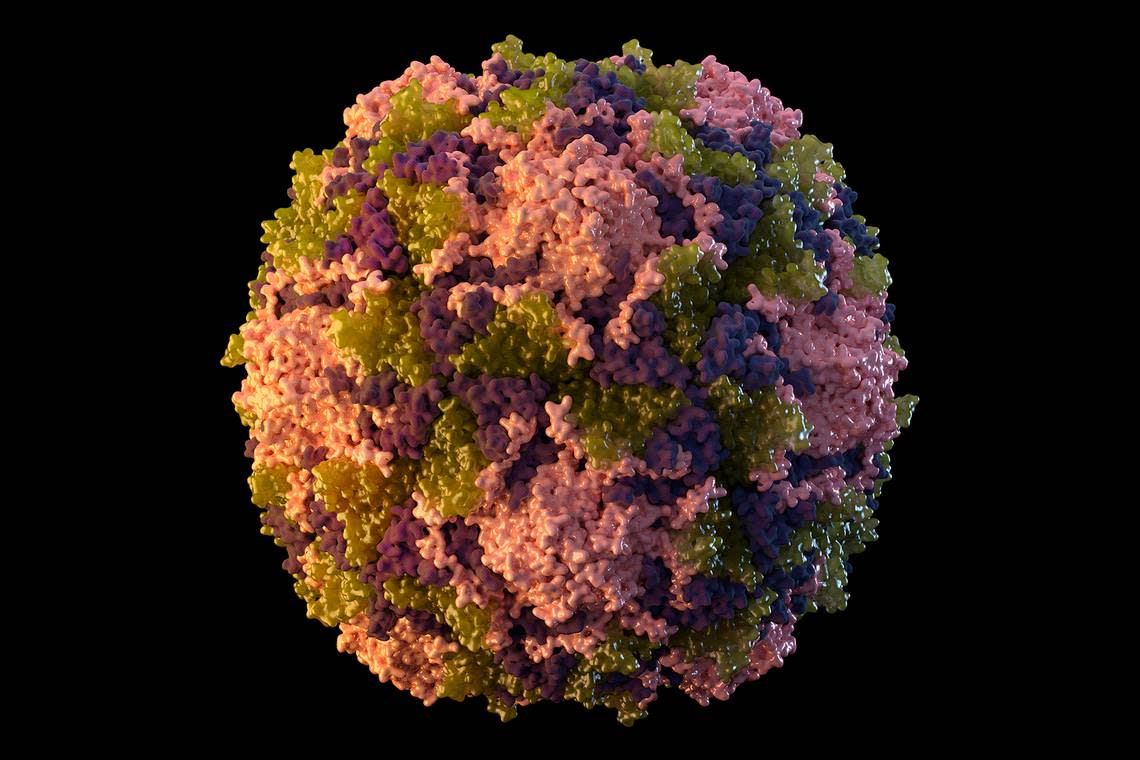Polio found in US for the first time in years, New York officials say. What to know

Polio, a viral disease responsible for nationwide outbreaks during parts of the 20th century, was found in the U.S. for the first time in nearly 10 years, health officials in New York say.
It “once caused widespread panic” in the country, particularly in the early 1950’s before the availability of polio vaccines, according to the Centers for Disease Control and Prevention. The contagious disease has not originated in the country since 1979.
A person was confirmed as polio positive in Rockland County in southern New York, the state’s health department announced on Thursday, July 21, in a news release. This is the first recorded U.S. case since 2013.
“The Department of Health strongly recommends that unvaccinated individuals get vaccinated or boosted with the FDA-approved IPV polio vaccine as soon as possible,” state health commissioner Dr. Mary T. Basset said in a statement.
The New York resident’s polio infection may have originated from someone else who was given an oral polio vaccine that has not been used in the U.S. since 2000, according to the release. This person may have spread it to the New York patient.
“This suggests that the virus may have originated in a location outside of the U.S. where OPV is administered, since revertant strains cannot emerge from inactivated vaccines,” health officials say.
Who is at risk for polio?
Those already vaccinated against polio are at a lower risk of contracting the disease, the news release says.
Polio is known to affect children younger than 5 more than other age groups, according to the Mayo Clinic.
The IPV polio vaccine is required nationwide for children to enter kindergarten, according to Britannica.
New York health officials are urging those unvaccinated against polio, including pregnant people, and those worried about a possible exposure to the disease to get vaccinated, the release says.
“Individuals who are already vaccinated but are at risk of exposure should receive a booster,” officials say.
Symptoms of polio and how it spreads
Polio is a potentially disabling and paralyzing disease, according to the CDC. It began to disable more than 35,000 people in the U.S. each year in the late 1940’s.
In the early 1950’s, it paralyzed more than 15,000 people in the country yearly before the IPV polio vaccine was introduced in 1955, followed by the OPV vaccine in 1963, the agency says online.
However, paralysis is one of polio’s more uncommon symptoms alongside paresthesia, a “pins and needles” sensation, and meningitis, according to the CDC.
Most infected do not display symptoms, the agency says.
More common polio symptoms, as listed by the CDC:
Sore throat
Fever
Tiredness
Nausea
Headache
Stomach pain
Polio spreads through direct contact with people and “lives in an infected person’s throat and intestines,” according to the CDC.
In 1994, North and South America were the first regions in the world declared as free from polio, according to the Pan American Health Organization.
Polio vaccination rates have been lower during the COVID-19 pandemic for different reasons, including “vaccine hesitancy,” PAHO says.
“In 2020, only 80% of children had received the third dose of the oral vaccine needed for full immunization — a decline from 87% in 2019,” according to the agency.
“Many of you may be too young to remember polio, but when I was growing up, this disease struck fear in families, including my own,” Rockland County executive Ed Day said in a statement.
The county’s health commissioner, Dr. Patricia Schnabel Ruppert, said the county is “monitoring the situation closely” and working with the state health department and CDC “to respond to this emergent public health issue to protect the health and well-being of county residents.”
Rockland County is roughly 40 miles north of New York City.
How widespread is long COVID? It’s put millions of US adults out of work, expert says
Do you need the monkeypox vaccine? What to know as thousands more doses coming to U.S.
‘Hypercontagious’ omicron BA.5 variant resistant to prior COVID vaccination, study says
Is omicron subvariant BA.5 the ‘worst’ version of COVID yet? Here’s what we know
